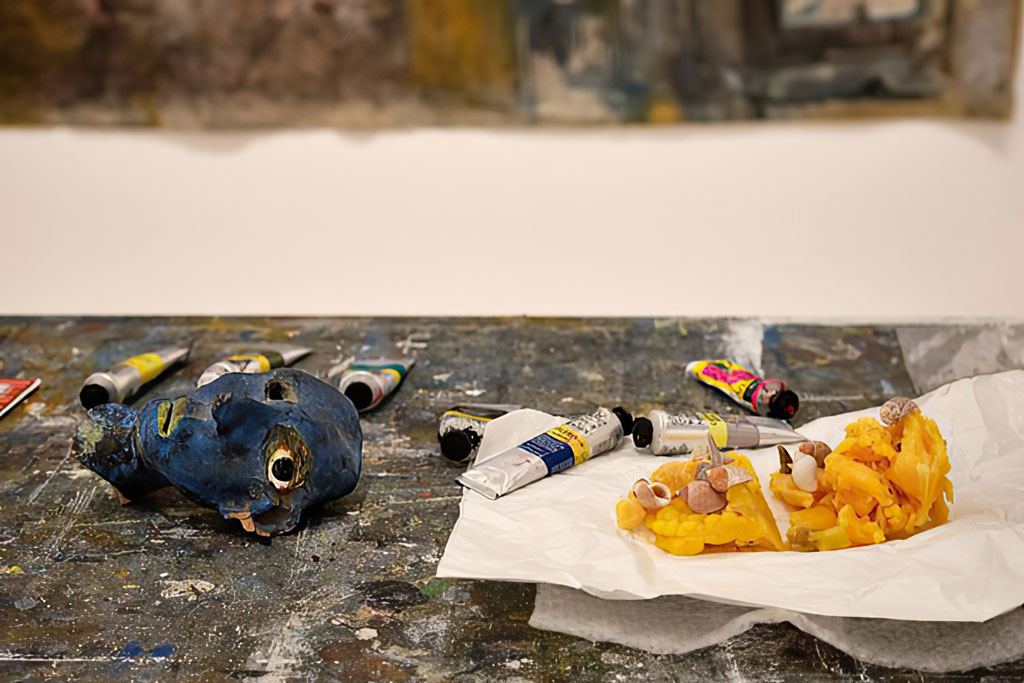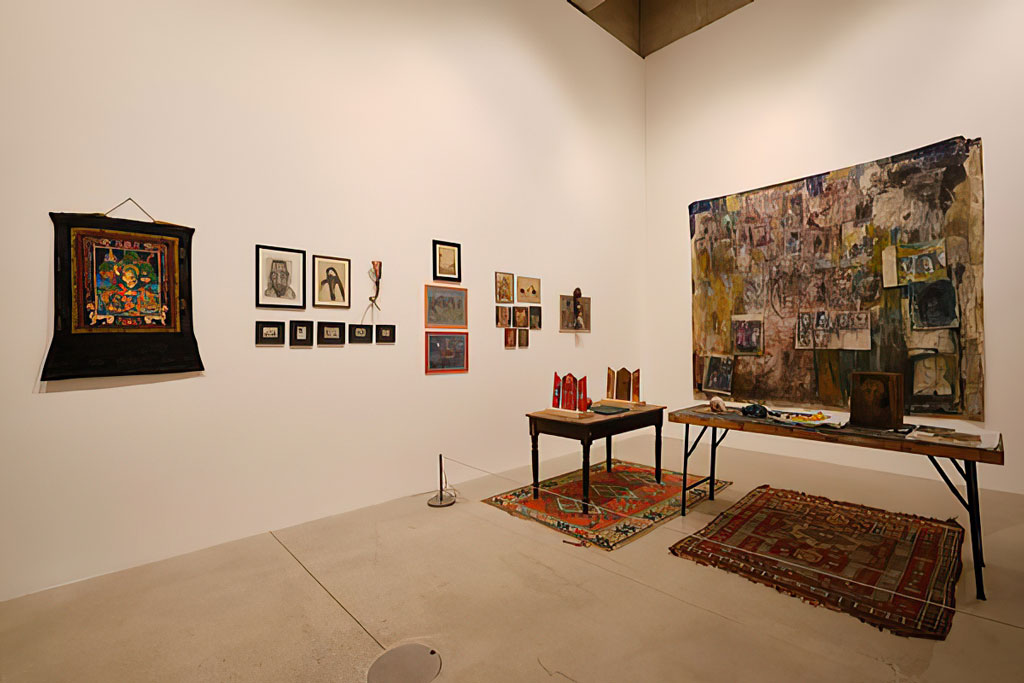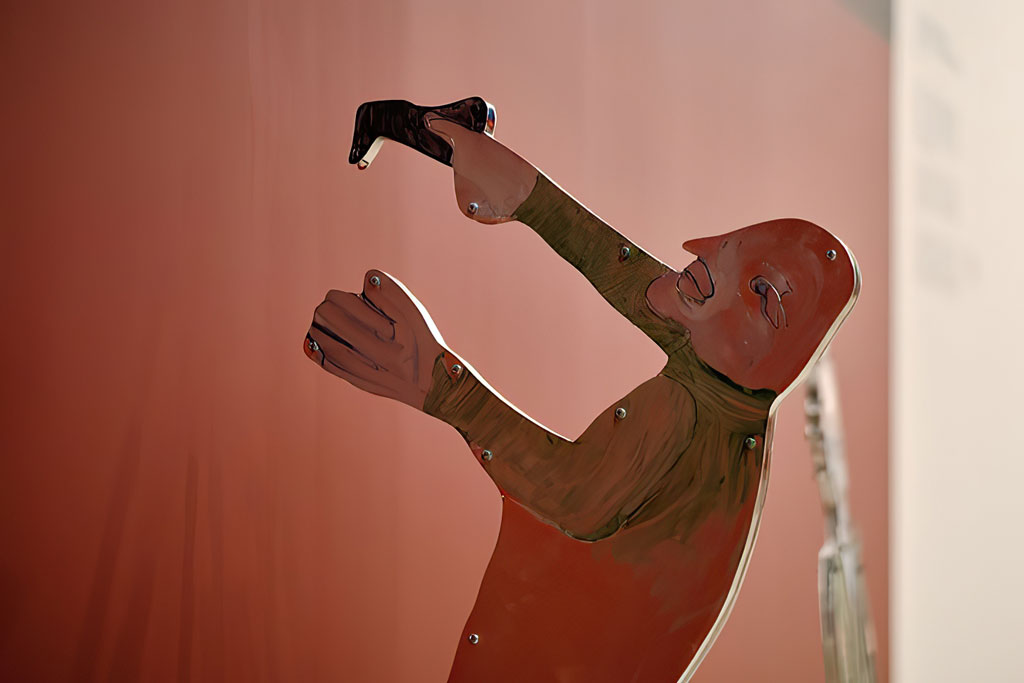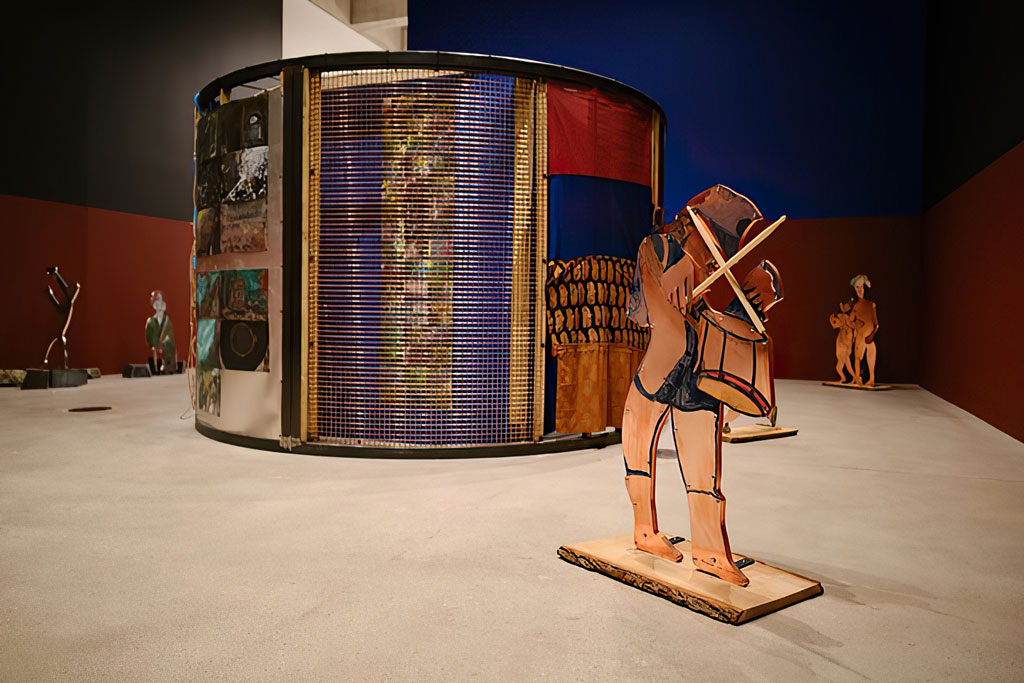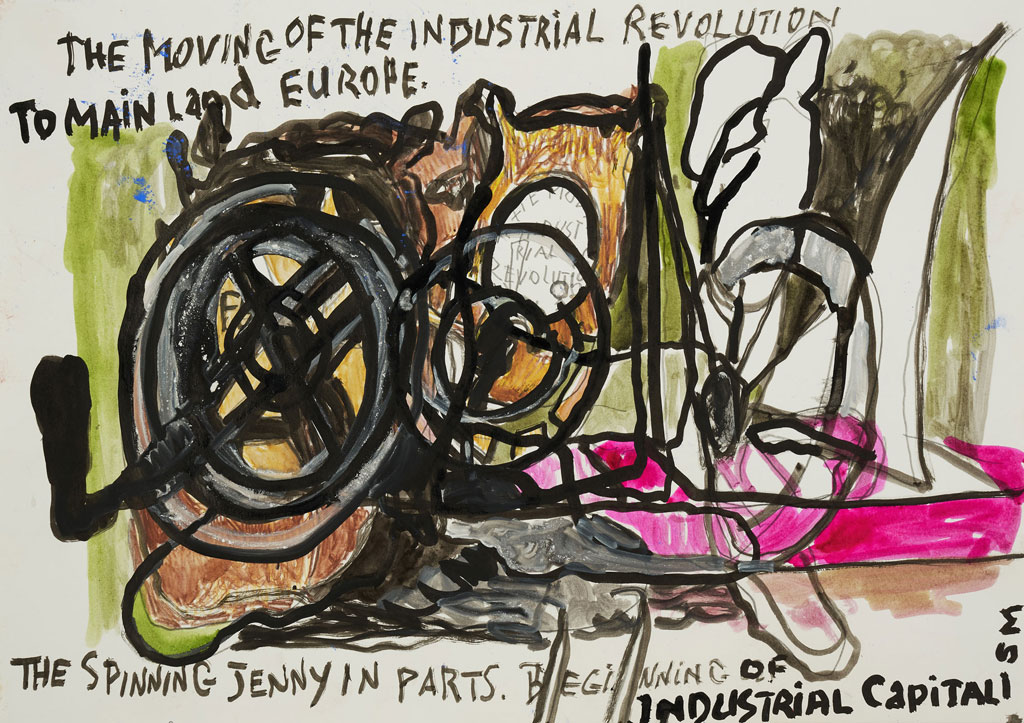ART-PRESENTATION: Anna Boghiguian-A Short Long History
 Anna Boghiguian, an Armenian born in Cairo, has been making art since the early 1970s. She has developed a practice that corresponds with the tradition of the travelling artist and it has already taken her to the farthest corners of the world. Being on the move is a source of inspiration and strengthens her commitment. An extremely well-read and free-spirited thinker, she links meaning to the passage and connection of things. With the utmost fascination, she investigates how flows of ideas, goods, people and capital are shaped, move globally, and can also result in inequalities.
Anna Boghiguian, an Armenian born in Cairo, has been making art since the early 1970s. She has developed a practice that corresponds with the tradition of the travelling artist and it has already taken her to the farthest corners of the world. Being on the move is a source of inspiration and strengthens her commitment. An extremely well-read and free-spirited thinker, she links meaning to the passage and connection of things. With the utmost fascination, she investigates how flows of ideas, goods, people and capital are shaped, move globally, and can also result in inequalities.
By Dimitris Lempesis
Photo: S.M.A.K. Archive
In her exhibition “A Short Long History” , Anna Boghiguian traces the history of the global cotton trade. She focuses on the city of Ghent, which has strong connections to this raw material. After all, cotton in Ghent marks the start of the industrial revolution on the European continent and the strong Belgian textile market of the last century, but also of social injustice, the exploitation of land and forced la-bour in Congo. Prior to her solo exhibitions, Anna Boghiguian spends a signifcant period of time in the city or region where she will present her work. She delves into the local history and culture and will create an installation on the spot. Whether making new work or an entire exhibition, she always departs from the themes that have marked her practice from the outset: wars and revolutions, the history of labour and certain raw materials, and the emergence of modern imperialism. In her exhibition for S.M.A.K., Anna Boghiguian digs further into the history of the global cotton trade. Cotton was already cultivated in antiquity and became one of the earliest mass consumer goods. Ghent has a special relationship with this commodity. From the 18th century onwards, the city im-ported cotton from the East Indies and later also from the United States. Through the mechanisation of its textile production in the 19th century, the city spearheaded the industrial revolution in main-land Europe. Until recently, cotton was spun, woven and printed in Ghent and traded throughout the world. Cotton made the city and its textile magnates rich, but it also led to the unfair treatment of textile workers, the exploitation of land and forced labour on the cotton plantations in Congo. The installation, “A Short History: How the Industrial Revolution Changed the Pace of Europe” (2020), is about Ghent and consists of a parade of cut-out figures. Using a traditional technique and expressive gestures, Anna Boghiguian painted the paper figures with wax and pigment and attached them to wooden sticks. In the work, we see Congolese cotton pickers, spinning and weaving machines, ships loaded with bales of cotton, textile workers in their meagre homes and lost Ghent factory buildings. The artist has supplemented the figures with small drawings that capture her personal impressions of scenes from the industrial history of the city. In “Promenade dans l’inconscient” (2016) Anna Boghiguian endeavours to sketch a portrait of the city of Nîmes’ subconscious. In a procession of paper characters, she interweaves the early history of Nîmes with that of her homeland, Egypt. Boghiguian depicts palm trees and crocodiles, two symbols that appear in the city’s coat of arms and reference the Battle of Actium (31 BC). In this naval conflict off the Greek coast, the Roman commander, Octavian, who later became Emperor Augustus, defeated the combined fleet of Mark Antony and Cleopatra. On the coat of arms, the crocodile representing Egypt is chained to a palm tree, symbolising Rome’s victory. To reward his generals for this triumph, Octavian gave them the land on which they subsequently founded Nîmes. With the large denim canvas that has been dyed crimson, the artist refers to the role of the city in the international textile industry, including the development of jeans fabric or ‘denim’, an abbreviation of ‘serge de Nîmes’ (‘a sturdy fabric from Nîmes’). The blue zigzag line on the sail represents the Nile and makes a link with feluccas, the traditional sailboats that still navigate the river today. Anna Boghiguian realised “The Salt Traders” for the Istanbul Biennale in 2015. The ancient city of Byzantium, now Istanbul, was at the crossroads of trade between Europe and Asia and, more specifically, a hub in the global trafficking of slaves and salt. The work takes this raw material as a starting point for an indictment of the abuses that now dominate our planet, such as the depletion of natural resources, climate change, the consequences of coloni-sation and slavery and the migratory movements that accompany them, human rights violations and financial crises. “The Salt Traders” is based on a story, set in 2300, about a Roman salt-trading ship that is suddenly released from the melting polar ice. A future civilisation uses the vessel to study its history. The installation contains a sail on which a map of the world indica-ting salt-trading routes is combined with hexagonal patterns, the latter of which symbolise the chemical structure of salt. The shape is also related to the cells of the honeycombs that Boghiguian has placed next to the sail in large frames. Other themes also come to the fore, such as Alexander the Great’s journey to the salt lakes in Egypt; the “Salt March”, a 390 km journey that Mahatma Gandhi and his followers made in 1930 in protest against the British salt monopoly in India; and the recent economic crisis in Greece, which Boghiguian describes as “a collapse of bread and salt”. Glass win-dows, on the other hand, show us different kinds of salt, and a drawing of a foetus in the salty amniotic fluid of the uterus indicates that it is also vital for humans. The cut-out figures in “A Tin Drum that has Forgotten its own Rhythm” (2018-19) were part of a larger installation of the same name that was shown in the exhibition “A Wanderer Through Time” at Tate St. Ives (2019). The raw material tin, as referenced in the title, is closely associated with the industrial history and culture of Cornwall, the region around St. Ives. The area was once one of the frontrunners of the mining industry, but gradually lost its importance. The last tin and copper mine, that of South Crofty, was closed in 1998. Boghiguian’s figures are made of steel covered in tin, nickel and copper. They represent the typical inhabitants of Cornwall throug-hout the centuries: miners and fishermen, the latter of whom have traditionally used local metals from the mines to can the sardines they catch off the coastline.
Info: S.M.A.K., Jan Hoetplein 1, Gent, Duration: 31/10/2020-21/2/2021, Days & Hours: Tue-Fri 9:30-17:30, Sat-Sun 10:00-18:00 (S.M.A.K. is closed due the COVID-19 safety measures), https://smak.be


